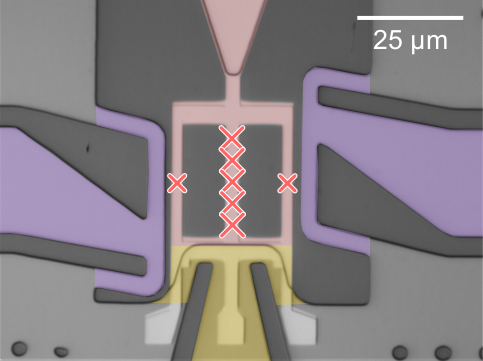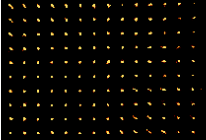Quantum mechanics was developed in the first half of the 20th century, following the pioneering work of Max Planck and Albert Einstein, who proposed the notion of the quantum. This theory has revolutionized our understanding of the physical world, from elementary particles to molecules and biology. It is the basis of many everyday objects, such as electronic circuits and GPS. The second half of the 20th century saw considerable progress both in understanding the concepts and in manipulating quantum objects on a microscopic or even individual scale. We are now at a turning point, where disruptive technologies based on these fundamental concepts are leading to new applications unimaginable twenty years ago, impacting computing capacities, optimization methods and data transfer security.
We can identify four main families of applications that structure quantum technologies in most international actions and are the subject of the four thematic axes of the QuanTiP DIM:
- Quantum computing,
- Quantum simulator,
- Quantum communication,
- Quantum sensors and metrology.

Quantum computing
By replacing the classical 0/1 logic of today’s processors (bits) with that of qubits (quantum bits) based on superposition and entanglement, we theoretically obtain a “universal quantum machine” capable of considerably reducing the execution time of certain algorithms (optimization problems, machine learning, cryptography methods).
The dual challenge of quantum computing is, on the one hand, to have a large number of “physical” qubits robust to decoherence and, on the other, to design the architecture and protocols to use them as efficiently as possible. Qubits can be made from a wide variety of physical systems (ions, photons, cold atoms, superconductors, semiconductors)…
espace

Quantum simulation
Some specific questions are inaccessible even to classical supercomputers, but do not require a universal quantum computer.
The aim of quantum simulators is to answer these questions, by modeling the behavior of systems made up of numerous interacting quantum objects. The idea is to simulate the problem under study with another quantum system, easier to handle, and to explore configurations or parameter sets inaccessible to the initial system. Verification of quantum simulators is essential, and requires multidisciplinary efforts to improve theoretical models.
espace

Quantum communication
One of the most mature applications of quantum technologies concerns the secure exchange of information via quantum communications, which generalize quantum cryptography methods.
The basis of this security is the encoding of information in quantum variables, which an eavesdropper cannot access without modifying them. The aim is to build extensive, hybrid quantum communication networks (combining several physical platforms to support quantum information and several types of encoding) and enable secure exchanges that are resistant to attack by supercomputers, whether classical or quantum.
espace

Quantum sensors and metrology
Whatever the physical system used (atoms, molecules, spins, optomechanical devices of micro- or nanometric dimensions), quantum sensors work by exploiting the quantum properties of matter and light to achieve very high sensitivity to external force fields.
They can be used to measure a wide range of physical quantities, opening up applications in numerous fields with high societal impact, such as climate and natural resource monitoring, healthcare, positioning, navigation and dating, or natural disaster prevention. While these sensors are often limited by classical noise sources, measurement protocols exploiting quantum correlations offer the possibility of pushing their sensitivity below the standard quantum limit.

